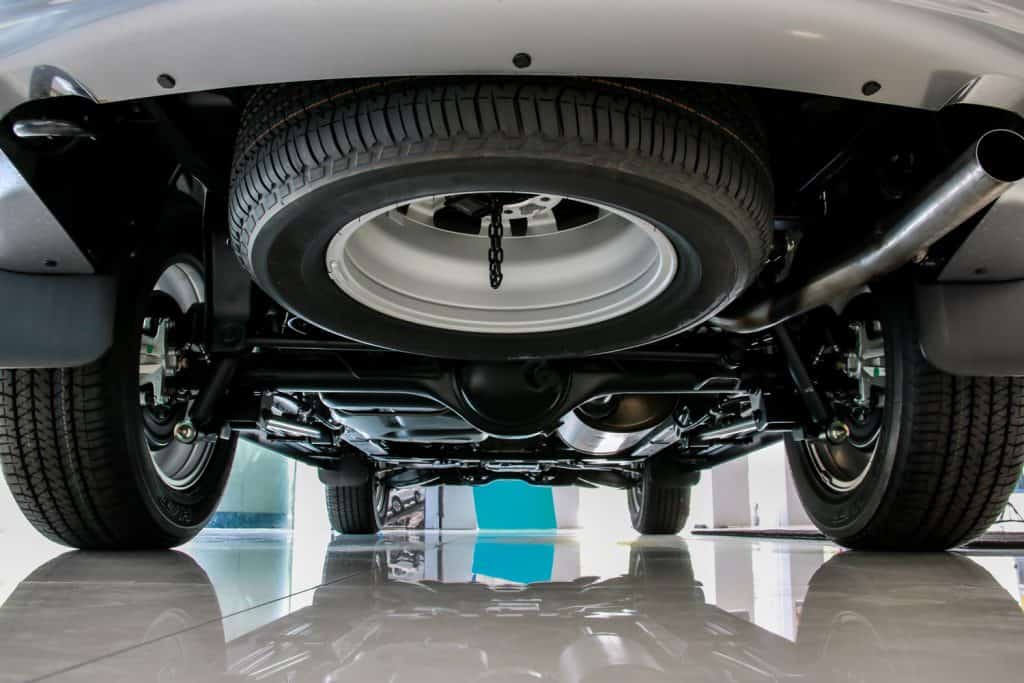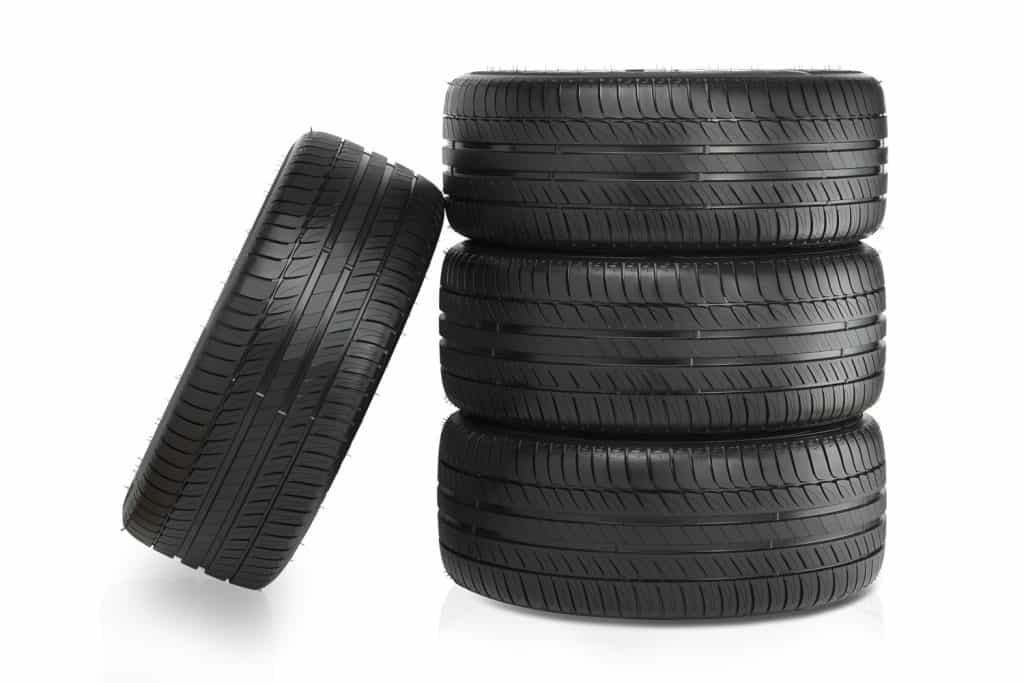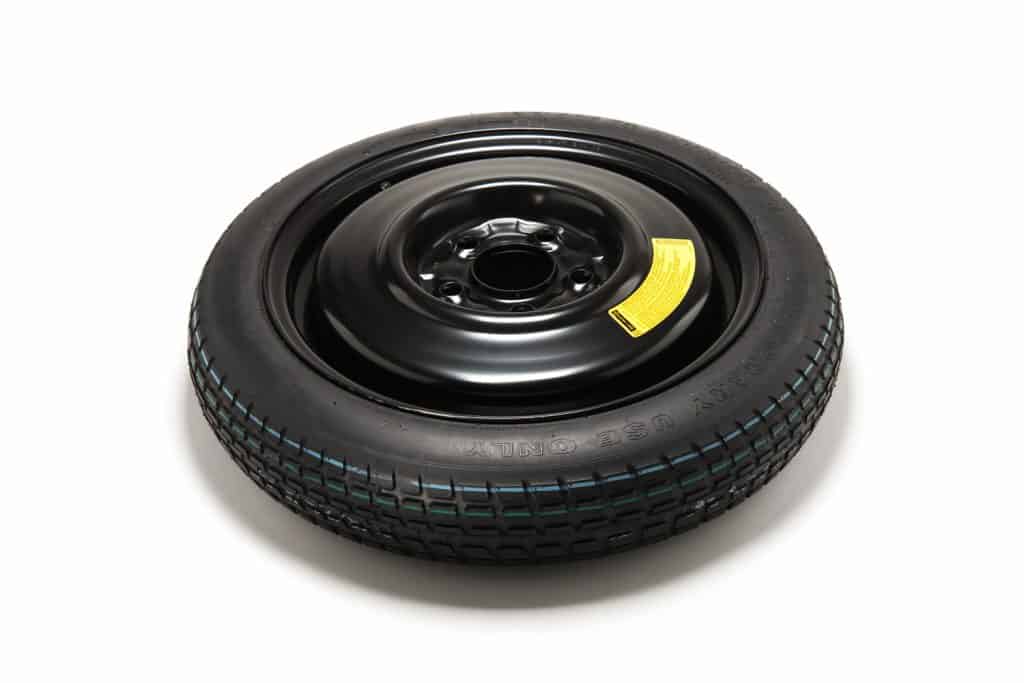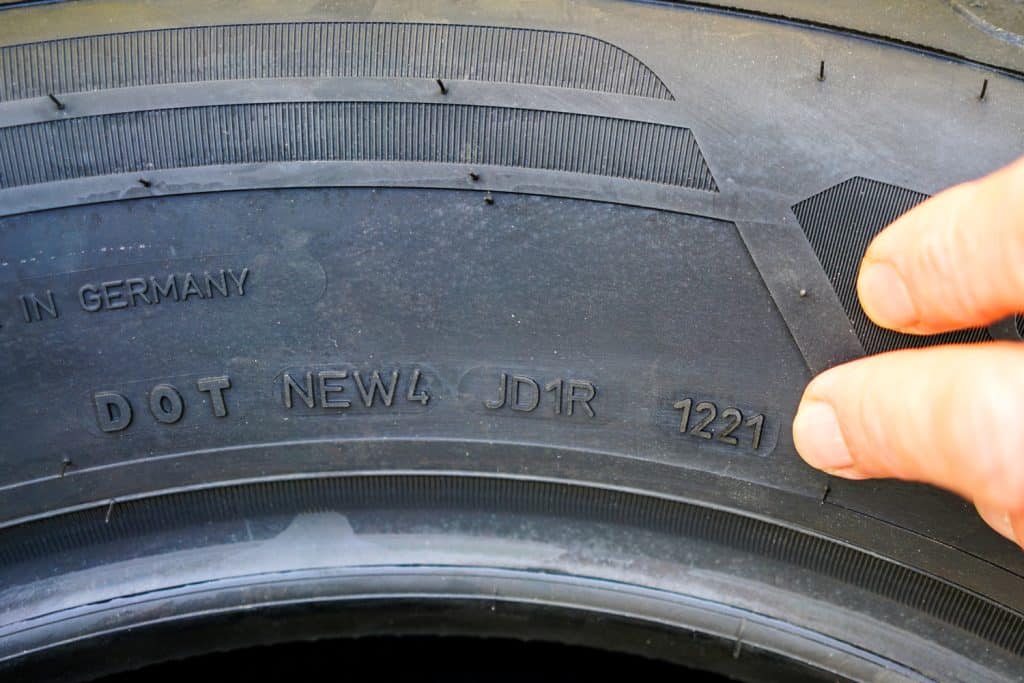Your tires can give out at any point in time. It can be due to lack of maintenance or bad luck. Luckily, you can count on a spare tire in those situations. However, have you ever wondered how long they last? If that's your concern, let's go over the details below.
The shelf life of your spare tires depends on the type you have. Full-size tires can last around 7 to 10 years. However, there's also the space-saver tire.
Some people may refer to it as a donut. Those will typically last 5 to 10 years.
Are you familiar with the spares you own? It's crucial to learn the differences. This way, you're not driving on one that could get you into an accident! Additionally, it's essential to check on them periodically. If you'd like to learn more, keep reading!
![Photo of the trunk and the spare wheel, How Long Do Spare Tires Last? [And How Far Can You Drive On Them]](https://vehq.com/wp-content/uploads/2022/06/How-Long-Do-Spare-Tires-Last-And-How-Far-Can-You-Drive-On-Them-683x1024.png)
The Shelf Life Of A Spare Tire

It's essential to check your tires routinely. This way, you can catch any signs of damage or lack of air pressure. Regardless, sometimes you can get unlucky and have a tire blow out.
Keeping a spare tire can turn this situation around. Fortunately, a spare tire can last a long while. More specifically, they can last as long as 5-10 years in the trunk of your car.
Full-Size Spare

Full-size spares tend to last longer. The name implies its usage. If it's a full-size spare, the tire is the same size as your current set of wheels. In other words, it's not a temporary replacement.
If one of your tires blows out, you can replace it with a full-size spare and continue driving with it. There's no need to visit a shop to buy a new one.
Still, you want to visit a shop and purchase a new spare tire.
These last around 7-10 years because they require the same maintenance as the tires you're currently using. In other words, you should inspect the tire pressure and the quality every month.
If you can't do it every month, it's better to do it seasonally. This way, you won't unexpectedly rely on a bad-quality spare.
The problem with full-size spares is the space it requires. When you don't have enough space, you usually have to downsize.
The Donut Spare

Since full-size tires require space, the typical replacement is the donut tire. You might also see them by the name of space-saver or compact spare. As its name implies, it saves you space.
The crucial part is how it does that. The donut saves space by having a more compact design. In other words, it's not your typical tire. It weighs less, and it's a temporary fix.
Therefore, you can only use it for several miles at lower speeds. Additionally, it doesn't have enough tread depth to offer good handling in bad weather. It gives up a lot of functionality to save space.
Since they're less durable, you can expect them to wear out quicker. Donut spares should be able to last you around 5-10 years.
Of course, always check the air pressure of your spare when you're checking out the whole set.
It's easy to tell the difference between a full-size and a donut. The donut spare will typically be smaller than the rest of your tires.
How Long Can You Drive On A Spare Tire?
While it's good to have them in the back, it's also crucial to know how to use them. Unfortunately, not all spares are the same. As mentioned, a full-size tire can be a permanent replacement.
Once you put them on, they should be able to last as long as the rest of your tires. It's not the same with a donut tire. Donut spares are only for temporary use.
So, if you find yourself using it at some point, you'll need to replace it quickly. You can ride on a donut spare for about 70 miles. In addition, you shouldn't drive over 50 miles per hour on it.
What Happens If You Go Over 50mph On A Donut Spare?

There are guidelines for its usage for a reason. Of course, you might find that it can handle going over 50 miles per hour. It might even last longer than 70 miles on the road.
However, you risk blowing it out the longer you wait.
You have to think about the difference between a donut and a full-size tire. The donut is much lighter and smaller. The lightweight construction doesn't allow it to have the same functionalities as a standard tire.
It also has a different tread pattern than the rest of your tires. Consequently, it usually has to turn faster to keep up. Donut spares also have a reduced capacity for load and heat dissipation.
Think of the guidelines as a safety precaution. They're made to prevent you from destroying the tire and wrecking your car.
Can You Reuse A Donut Spare Tire?
Donut spares aren't the same quality as a full-size tire. However, that doesn't mean they're a one-time use item. Once you replace them with a proper tire, you can reuse them.
As long as they're still of good quality, they should be safe to use for future blown tire situations. If you have any doubts, visit a mechanic for a second opinion.
They can accurately tell you if your spare is still in good shape.
When Should You Replace A Spare Tire?
Spare tires can go a long time without usage. It sits in the trunk of your car without seeing much action. Even if it's not in use, tires degrade over time.
Therefore, you can't always rely on the spare. Many people recommend you check on it periodically to see if it's in good shape. However, how can you tell when to replace the spare?
You'll mostly have to rely on the age of the tire. If the spare is more than ten years old, you should replace it with a new one. Even if the tire looks as good as new on the outside, it's still old.
You have to remember that tires are rubber. So, even if it looks good as new on the outside, the rubber compounds might have deteriorated enough to avoid using it.
Check The Age Of The Tire
If you have no idea how long you've held on to the spare, there's an easy way to find out the age. Look at the sidewall of the tire. There should be characters that follow a DOT symbol.
You can ignore most of the letters. We're only focusing on the last four digits. The first two tell you the week of manufacturing. The last two digits tell you the year.

We can use the picture above as an example. The digits we can see are 1221. Therefore, this tire was manufactured on the 12th week of 2021.
Exposure To The Elements
There are various car manufacturers. They all have their way of design. So, some people might store their spares in the trunk. On the other hand, others might keep it underneath the vehicle.
Spares that are underneath the vehicle will have more exposure to the elements. Thus, it's crucial to inspect the overall quality of the tire. Look out for any signs of dry rot or cracking.
Air Pressure And Rotation
Spares sit out for a long time. Since they don't do much, it's possible to think there's not much to check. However, they do lose air pressure over time.
So, if you haven't checked your spare with the rest of your wheels, it may be under-inflated. It's a problem for donut spares because they require more air pressure than the rest.
More specifically, the tire pressure for a donut spare needs to be at 60psi. Full-size tires require the same amount of air as your standard set. You should also rotate them with the other four.
What Happens If You Drive On A Spare Too Long?
It's possible to see people drive on one or two donut spares. Accordingly, you might think it would be fine to drive on it for longer than 70 miles. After all, others seem to have success with it.
Some people could even drive more than 300 miles on one. So, it can feel like it's proving the guidelines wrong. However, that's not the case.
Letting your vehicle drive on a donut spare will only bring you more trouble.
It's a race to see what gives out first. The tire can give out before you find a replacement. Otherwise, it might be the transmission that gives out. If you can avoid driving on a spare for too long, you should.
In Closing
Hopefully, you're never in a situation where you'll need to use your spare tire. Spare tires can last a long while sitting idle. Still, you should always check on it routinely.
This way, you won't have the spare giving out on you in a time of need.
Before you go, do you have other tire concerns? Did you have your car sitting for a long time? You might be wondering if your tire can go flat in this situation.
To learn more, check out:
Can Tires Go Flat From Sitting?
Are you mixing and matching tires? That might be a bad idea! For more information, check out:
Do All 4 Tires Need To Be The Same Brand? Or Can You Mix And Match?
